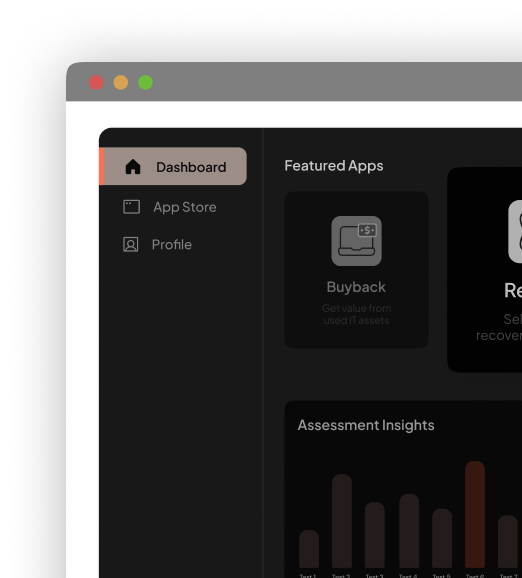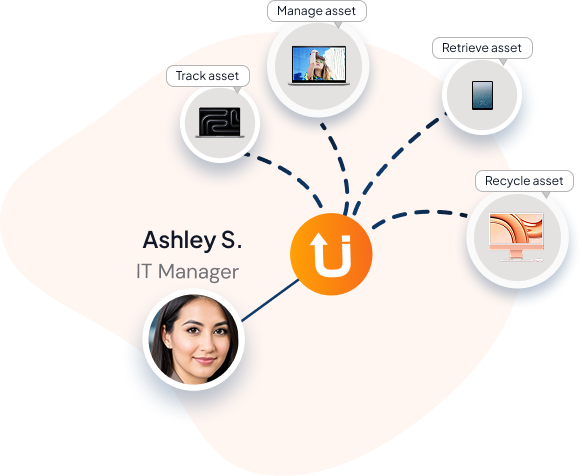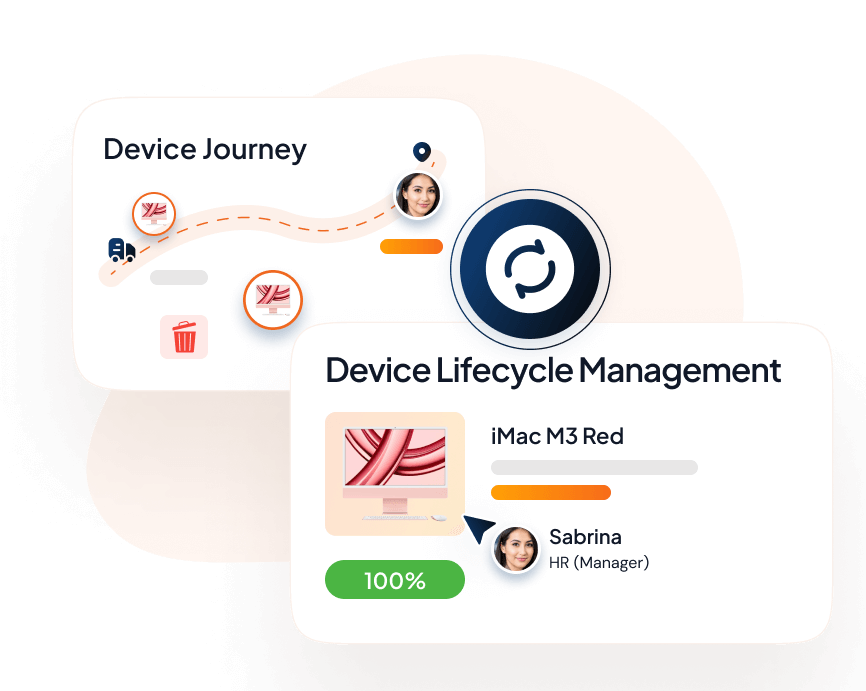Managing a remote team has become an essential skill in today’s work culture. As remote work becomes more common, businesses can hire talent from anywhere and offer employees greater flexibility. However, to keep operations smooth and data secure, companies need a robust remote team management strategy.
Key Takeaways
- Clear communication keeps everyone aligned
- Regular check-ins and team-building boost engagement
- Collaboration tools improve team productivity
- Defined goals and performance tracking keep teams on track
- A strong company culture fosters connection and motivation
- The right tech makes remote work smoother and more efficient
The Unique Challenges of Remote Team Management

Remote team management involves navigating various challenges, particularly in maintaining effective communication, enhancing employee engagement, and ensuring seamless collaboration. Here are some common challenges faced by remote managers:
1. Weak communication
Communication is fundamental to the success of any remote team member. In a virtual setting, ensuring effective communication becomes even more crucial to maintaining team cohesion and productivity.
2. Disconnected remote employees
Remote working environments can sometimes lead to feelings of isolation among employees. Thus, fostering engagement and implementing strategies to retain top talent is paramount for remote managers.
3. Lack of Imminent leadership
Collaboration among remote team members is essential for achieving project goals and ensuring collective success. Managers must facilitate seamless collaboration through appropriate tools and methodologies.
4. Lack of clear management system
Managing performance remotely is difficult due to a lack of real-time feedback, unclear performance metrics, misaligned expectations, and challenges in recognizing employee contributions.
5. Weak culture alignment
Without in-person interactions, remote teams may feel isolated and disconnected from company values, leading to lower engagement, weaker team cohesion, and reduced alignment with organizational goals.
6. Inaccessible support
Remote employees often struggle to access IT support, HR assistance, and mental health resources, leading to frustration, decreased productivity, and unresolved work-related issues.
Best Practices for Managing Remote Teams
Managing a remote team comes with challenges, but the right strategies can keep teams connected, engaged, and productive. From clear communication to strong support systems, here are the best practices to make it work.
1. Communication sets the tone for remote success

Communication is the key to successful teamwork among a virtual team. The following practices can help you maintain better communication with your remote teams:
I. Synchronous Communication
Utilize a synchronous communication tool such as Microsoft Teams and other video conferencing platforms to facilitate real-time interactions and team meetings in a remote setting.
II. Open Communication Channels
Establish clear communication channels and protocols to ensure open and transparent communication among remote team members.
III. Clear Communication Guidelines
Define communication expectations for your remote staff, including preferred communication channels, response times, and meeting schedules, to streamline information flow.
2. Building a culture of engagement for remote employees
Working remotely can isolate the remote team members, which is why it is so important to devise a strategy to stay in touch with them.
- A remote team manager must schedule regular one-on-one check-ins in the form of a virtual meeting to keep remote employees engaged, informed, and motivated.
- Organize virtual team-building activities and social events to foster camaraderie and strengthen team bonds despite physical distance.
- Acknowledge and reward remote employees for their contributions and achievements through virtual awards, shout-outs, or performance-based incentives.
3. Bringing remote teams together through smart collaboration

Implement collaboration tools like Slack, Asana, or Trello to facilitate seamless project management, task delegation, and document sharing among remote teams. Adopt agile project management methodologies and tools to ensure clarity on project goals, timelines, and individual responsibilities. Encourage collaboration across different departments to promote knowledge-sharing and cohesive team culture.
4. Empowering remote teams with clear performance metrics
A major part of remote team management is keeping the team engaged and productive. You need to set clear goals and define KPIs to measure your remote team’s performance. Implementing clear goals and expectations with SMART (Specific, Measurable, Achievable, Relevant, Time-bound) goals and clear performance expectations to align remote team members with organizational objectives.
Regular performance audit and reviews of your virtual teams helps in providing constructive feedback, assess progress toward goals, and identify areas for professional development. Accountable metrices can be done using key performance indicators (KPIs) and performance metrics to track remote team productivity, performance trends, and project outcomes effectively.
5. Bringing company culture to life for remote teams

A strong company culture keeps remote teams engaged and connected. Fostering shared values, inclusivity, and balance helps create a sense of belonging.
- Reinforce organizational core values and mission statements to instill a sense of purpose and belonging among remote employees.
- Embrace diversity and inclusion initiatives to create a supportive and inclusive remote work environment that values different perspectives and backgrounds.
- Promote work-life balance through flexible work hours, wellness programs, and initiatives that prioritize employee well-being and mental health.
6. Equipping remote teams with the right support

As a remote team manager, it is extremely important for high productivity to help your remote team grow personally and professionally.
“Empower remote teams with continuous learning, robust technical support, and wellness programs for productivity and well-being.”
Using AI to make remote team management smarter

Remote work is evolving fast, and AI is making it easier to manage teams from anywhere. But AI isn’t here to replace human leadership, it’s here to help.
1. AI-Powered Communication Tools
Utilize AI-driven platforms for real-time transcription, automated meeting summaries, and language translation to facilitate smoother team interactions.
2. Automated Task Management
AI-enabled task managers can optimize workflows, reduce administrative burden, and help remote teams stay aligned on priorities
3. Human + AI Collaboration
While AI enhances efficiency, human oversight remains crucial. The best remote teams combine AI-driven insights with empathetic leadership to create a productive and people-first work environment.
Essential Tools for Remote Team Success
Effective remote team management heavily relies on robust communication and collaboration platforms such as Microsoft Teams, Zoom, and Slack. These tools offer a range of technical capabilities essential for remote environment interactions, including video conferencing, real-time messaging, file sharing, and integrated project management features. Leveraging these platforms optimally enhances team connectivity and productivity, fostering a cohesive remote work environment.

Microsoft Teams: Leveraging collaborative platforms like Microsoft Team facilitates real-time communication, file sharing, and project tracking among remote team members. This centralized hub streamlines workflows and enhances team collaboration across geographical boundaries.
Video Conferencing Solutions: Effective communication hinges on seamless video conferencing tools that enable face-to-face interactions and virtual meetings. Platforms such as Zoom and Google Meet foster engagement and facilitate visual cues essential for effective remote communication.
Project Management Software: Implementing agile project management tools such as Asana or Trello empowers remote teams to manage tasks, timelines, and deliverables efficiently. These platforms promote transparency, accountability, and alignment with organizational goals.
IT Asset Device Lifecycle Management Platforms: Having a device lifecycle management platform like Unduit helps you remotely manage your devices from the time of procurement to the end of their lifecycle.
Smarter Workflows with AI-Powered Tools: With AI-driven insights, remote teams can track progress, optimize workflows, and identify potential roadblocks before they impact productivity. Smart automation ensures teams stay on top of their work without added complexity.
To wrap things up, managing a remote team comes with challenges, but the right approach makes it easier. Clear communication, strong company culture, and structured performance management keep teams engaged and productive. With the right tools and support, remote teams can thrive just as well as in-office ones.
Why Unduit is Your Trusted Partner for Remote Team Management?
Unduit empowers global organizations to manage remote teams effortlessly, ensuring seamless communication, productivity, and security. Our platform streamlines every aspect of remote workforce management, from onboarding to offboarding, tailored for distributed teams.
Here’s why Unduit is the go-to solution:
Global Workforce Coverage: Operates in 100+ countries, standardizing device procurement, deployment, and retrieval for remote and hybrid teams.
End-to-End Lifecycle Management: Automates onboarding, device tracking, and offboarding, simplifying IT asset management for global workforces.
Secure and Compliant Operations: Certified data erasure and HIPAA, PCI, GDPR-compliant processes ensure sensitive data protection during transitions.
AI-Powered Support: Real-time monitoring and troubleshooting minimize downtime, keeping remote teams connected and productive.
Strong Team Culture: Fosters engagement with tools for collaboration and communication, preventing remote teams from drifting apart.
Transparent Reporting: Detailed analytics on device usage, performance, and compliance support strategic planning and audit readiness.

For companies scaling remote workforces, Unduit simplifies management, enhances security, and drives productivity. Explore our services today to transform your remote team operations.
Frequently Asked Questions (FAQs)
1. How do you handle time zone differences in remote team management?
Flexibility is the way to go. Use shared calendars, async tools, and set overlapping hours for key meetings. Recording calls also keeps everyone in the loop.
2. What are the best ways to handle conflict in a remote team?
Clear communication solves most issues. Encourage open conversations, set expectations early, and use video calls to address problems before they escalate.
3. How do you manage remote team members who are reluctant to communicate?
Start with trust. Regular check-ins, clear expectations, and offering multiple ways to connect make it easier for team members to open up and engage.
4. How to manage multiple remote teams effectively?
Stay organized. Assign team leads, set clear goals, and use collaboration tools to track progress. A structured approach helps everything run smoothly.
5. What are the common mistakes to avoid in remote team management?
Poor communication, unclear goals, and lack of engagement. Structure, the right tools, and making people feel valued help create a productive remote team.






